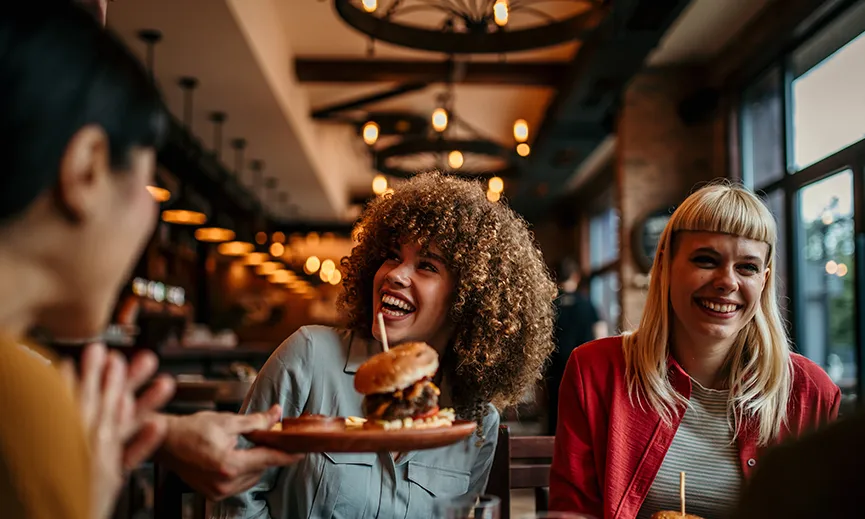
The evolution of loyalty schemes in hospitality
Back in 1995, when Pulp was in the charts with Common People and Pierce Brosnan made his Bond debut in GoldenEye, Tesco trialled a ‘thank you’ card. It rewarded the customers who chose its stores by giving them 1% off their bill. This was, of course, the genesis of the Tesco Clubcard.
Now, Tesco’s loyalty scheme is hailed as one of the most successful in the UK retail market and more than 20 million people hold a Clubcard. The offer has evolved over time, of course. Competition has put its own pressures on the scheme and factors such as the current economic crisis have helped shape and change it over time too.
This latter point is currently highly relevant to hospitality businesses looking to capitalise on loyalty at the moment, with the current cost-of-living crisis having an impact on consumer behaviours and their expectations of brands.
Our insight shows, for example, that 16% of consumers are less loyal to hospitality brands since the start of the cost-of-living crisis and more than half of people (52%) admit they have higher expectations of the brands they are loyal to because of ongoing cost pressures.
Our research also shows that loyalty schemes may not be a primary reason for consumers to return to a venue again and again – but they can have a role to play in building loyalty and driving revenue.
One of the key aspects of a loyalty scheme, then, should be increasing the perception of value customers have towards your brand. However it’s important to note that ‘better value’ doesn’t necessarily mean ‘cheaper’, just that your offering presents the right value for money for your target audience. As Mark Derry, Chairman at The Heartwood Collection puts it–“Not all discounts are a bad thing. If you have evenings when your venue isn’t full and you offer a discount that gets loyal customers through the door and feeling special then, as a mechanic that delivers on business requirements, that works.”
Gusto: Launching a Subscription-Based Membership Scheme in a Cost of Living Crisis
In March 2024, Gusto became the UK’s first casual dining brand to launch a subscription-based membership programme. The Gusto Platinum Club is £65 a year, or £6 monthly, and members receive 40% off food from Sunday to Thursday for themselves and up to three guests. Members also receive a complimentary bottle of Prosecco to take home upon sign-up and exclusive invites to menu launches.
This model not only rewards loyal customers but also encourages dining out during quieter days of the week – and it has been a success for the brand.
In the months following the launch, frequency of visits doubled. There was also a noticeable increase in spend, with customers opting for nicer bottles of wine, or going for two rounds of cocktails, all thanks to the 40% discount off food.
Key takeaways
Whilst loyalty schemes alone may not be a guaranteed driver of repeat visits, they can play a powerful role in enhancing the value of your offering. As Gusto’s success with their subscription scheme shows, combining compelling promotions with a loyalty reward structure that gives customers what they want can be a great way of both rewarding customers already loyal to your business, as well as building new brand advocates.

The evolution of loyalty schemes in hospitality
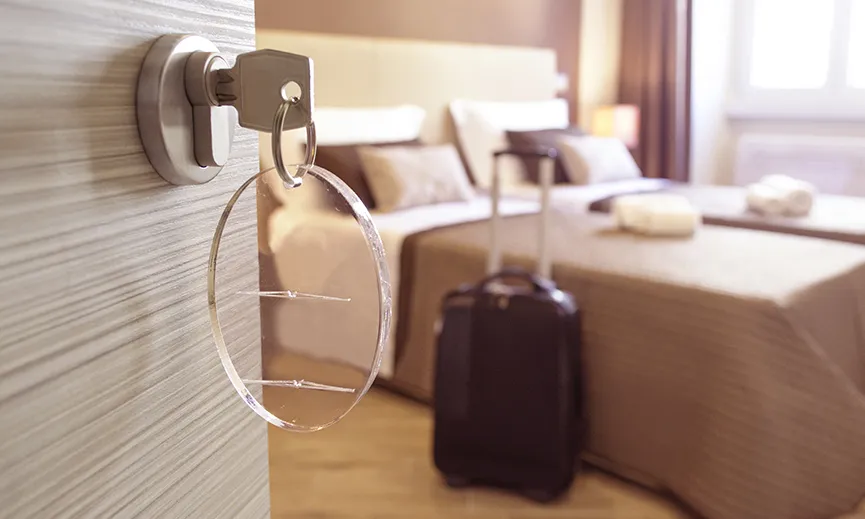
Seamless stays and smooth operations: The impact of Zonal PMS on pub accommodation
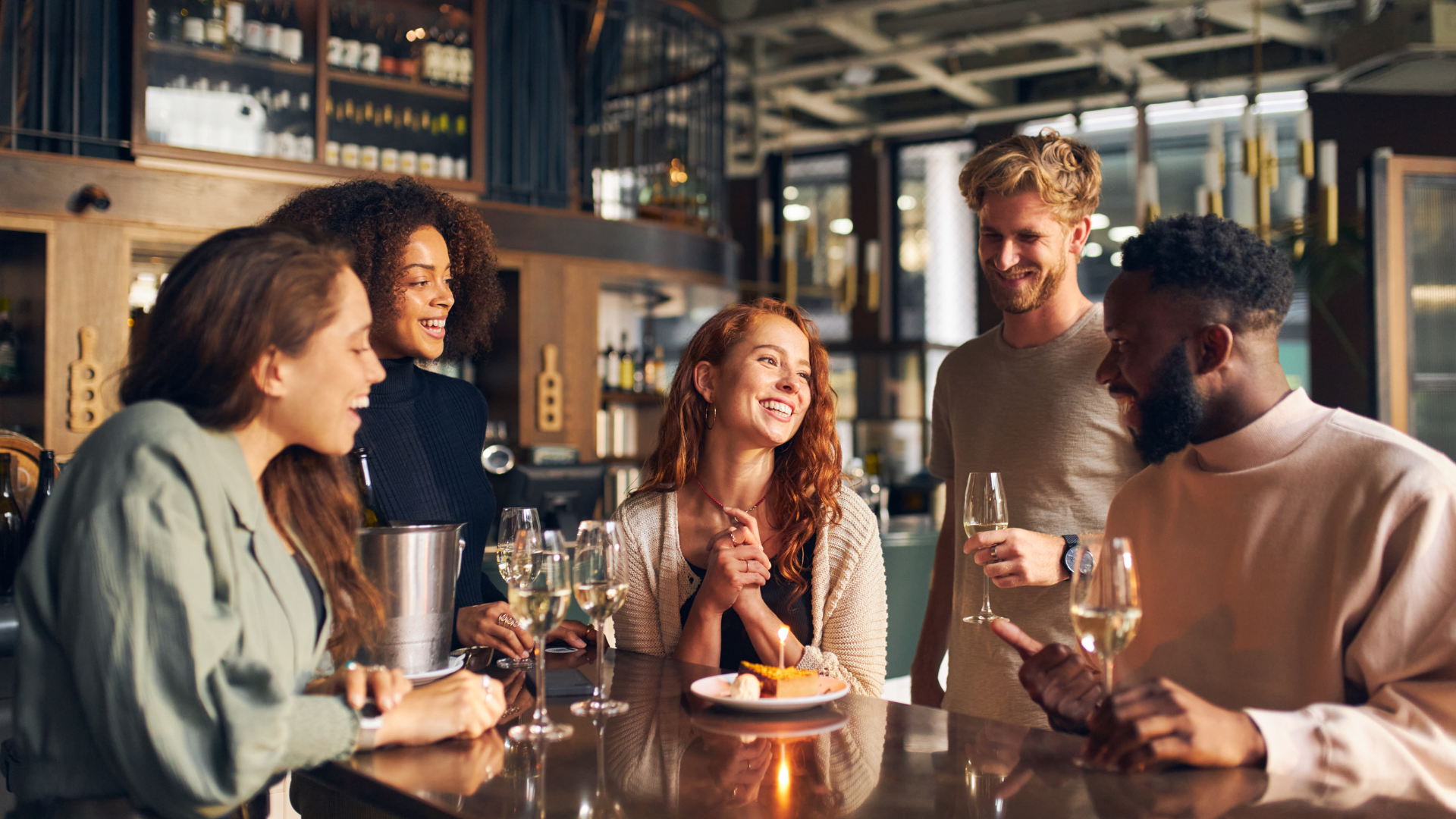
Does customer loyalty even exist?

What is loyalty?

GO Technology: Hotels and consumers – Guest expectations and how to meet them

Podcast: The future of hotel management

Booking occasions in 2025: Guest behaviour and the opportunity for operators

Optimising Your Restaurant’s Capacity: 4 Steps to Smarter Booking Management

What Will Customer Loyalty Look Like in 2025?
Last summer Pret A Manger announced it was ditching its much loved subscription, Club Pret. Under the old scheme, subscribers received five free coffees a day and 20% off food for £30 a month. The new replacement scheme offered up to five half-price coffees a day for £10 a month, with no discount on food.
“Given the majority of our customers are not Club Pret subscribers, our priority now is to focus on better value for everyone,” managing director Clare Clough told customers at the time.
Certainly, our research shows people do see loyalty schemes as generally representing good value for money (58% of consumers agree with this statement) and financial rewards are particularly welcome when times are tough.
Nearly half (47%) of consumers – rising to two-thirds of those aged 25 to 34 – say they have joined more loyalty schemes to save money since the recent cost-of-living crisis began. While they are an important part of the mix, there is however, more to a successful loyalty scheme than deep discounts.
At its core, the role of your loyalty scheme is to keep your customers coming back for more. But to do this, it needs to actually give them what they want.
Our previous research into consumers’ loyalty towards hospitality venues found that value-led loyalty schemes were most popular with consumers, with members-only pricing (49%), collecting points for purchases (39%), cashback schemes (37%), and deals on frequently purchased products (29%) all coming out as the top picks in a list of what types of loyalty schemes they’d like to see. With rising costs putting pressures on consumers’ wallets as well as hospitality venues, it’s no surprise that schemes that offer straightforward financial incentives came out on top.
Beyond monetary incentives, schemes including a chance to win prizes (13%), personalised offers and deals (12%), and deals on products within a different sector (9%) all saw some interest from consumers. Whilst these may not take the form of blanket discounts or financial incentives, they do still emphasise the importance of ensuring your loyalty offering truly adds value to your customers.
While the appetite for loyalty schemes is clearly there, there are nevertheless some barriers to entry.
A significant number of people are put off by upfront membership costs (38%), for example, while 29% don’t want to be locked into a subscription, and 22% feel that they wouldn’t get enough value by signing up for a scheme.
It’s a reminder that for loyalty schemes to work, it must be clear what value they are going to deliver and communicating this will be key to success.
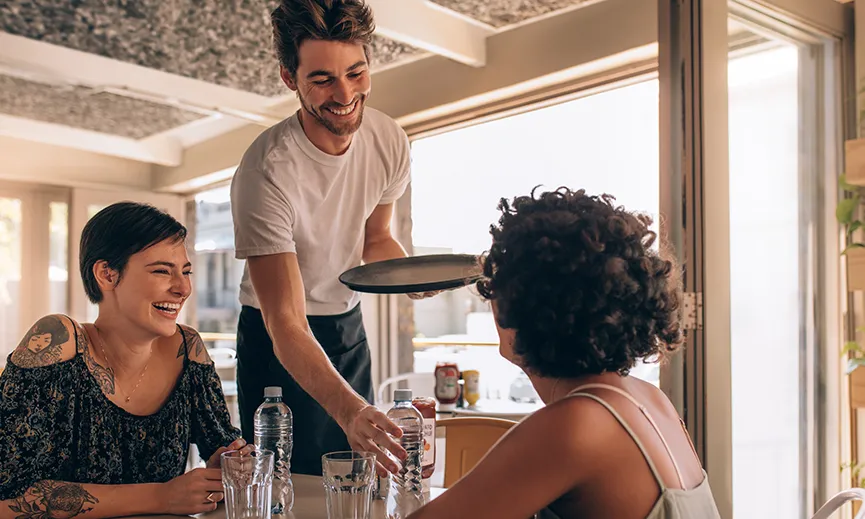
Loyalty in a cost-of-living crisis

Seamless stays and smooth operations: The impact of Zonal PMS on pub accommodation

Does customer loyalty even exist?

What is loyalty?

GO Technology: Hotels and consumers – Guest expectations and how to meet them

Podcast: The future of hotel management

Booking occasions in 2025: Guest behaviour and the opportunity for operators

Optimising Your Restaurant’s Capacity: 4 Steps to Smarter Booking Management

What Will Customer Loyalty Look Like in 2025?
As more businesses turn to mobile apps to deepen customer engagement, managing loyalty programs within these platforms has become both a priority and a challenge.
Whether you’re launching a rewards system for the first time or optimizing an existing one, it’s natural to have questions which is often where Zonal’s Customer Success team are able to support our customers, not only those onboarding, but also those who are looking to improve.
Whether you’re considering implementing Loyalty into your venue, or already use Loyalty and are looking to get the most out of it, our Customer Success team have collated and answered some of the most common FAQs from both operators we work with and their guests about running a loyalty program through your app — so you can deliver seamless, personalized experiences that keep customers coming back.
With Zonal Loyalty, you’ll have access to a Loyalty UI (Platform) to manage this type of demand. Within the Loyalty UI, staff members can:
(It’s worth noting, though, that these changes will not update within the App).
As changes in Loyalty will not update within the app, the below process should be followed if a guest requests their details to be changed within the App:
Email addresses should not be changed for the White Label App, as this links to the Loyalty Account. The email address should first be changed within Loyalty by a member of staff. The guest should create a new account within the White Label App and add their existing card during sign up to the app. Alternatively, a service request can be logged for email addresses to be changed as the process is outlined above.
A process flow to help troubleshooting….
The below flow outlines the system checks that are completed during Sign Up to the App to support within trouble shooting.
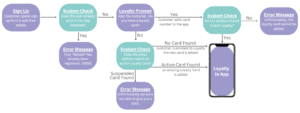
If a guest receives an error when adding Loyalty to the App, this could be due to a suspended loyalty card linking to the email address, the following options are available to support the guest:
When actioning any of the above, it is important to consider why the guest has a suspended card.

If a guest wants to remove their Loyalty Card from their App or an incorrect Loyalty Card has been added, they are able to complete is from the Loyalty card screen. Once the Loyalty card has been removed, the guest can then add an alternative card.
IMPORTANT
When logging requests for customers with the Zonal Help Centre, personal details must be shared securely. Additionally, service requests follow an SLA.
The below are some of the queries our Customer Success team hear being asked by guests to venues they visit. It’s worth displaying some of the most common questions and answers either within the App or on your own website somewhere to help guests navigating the platform(s).
Guests should navigate to the balance check screen on your website, enter their email or phone number (that was used to originally sign up to Loyalty), along with their Loyalty pin number. Their Loyalty card number can also be used to check balances on the website, along with their Loyalty pin number.
This will be sent to guests within their confirmation of registration email, on signing up to Loyalty. Additionally, the Forgotten Pin link within the balance check screen can be used to resend their Loyalty Pin number.
It is recommended guests contact the your Head Office to amend any details to ensure the information is updated correctly.
If logged in, guests should navigate to the side menu, select their name (first option on the list) and select “Edit Account”. They will need to enter their Existing Password and New Password and select “Update Details” to save.
If logged out, guests should use the Forgotten password link and enter their email address. If an app account with that email address is found, they will be emailed a new password to sign in. It is recommended that once signed back in, guests should update their password, using the above steps, for security.
Firstly, guests should check their Junk/Spam folders. If they are still unable to locate the forgotten password email, attempt to create an app account (if possible, don’t enter your mobile number in the sign-up form). If the guest can create an account, this means that they are using an email address that hasn’t previously been used in this app. If an error occurs on account creation, guests should contact your Head Office team.
No, a guest can’t change their Pin number. Only app passwords can be amended. If the guest is concerned that their Pin number has been compromised, they should contact your Head Office team..
If a guest believes the wrong Loyalty card is associated with their App account, they should navigate to the My Loyalty Card screen within the App. In the top right there is a button with a card symbol and a “-“. The guest should select this button and select “Yes, I want to remove it”. On completion, a new screen will appear asking if they have an account. Select “Yes, I have an Account”, enter the Loyalty Card Number they want to add to the app and the email address used when they signed up for Loyalty. If the details are correct this will add the required Loyalty card to the app.
If an account is created with the wrong email address, it is recommended that guests create new account on the app. Whilst creating the new account, the guest can add their existing Loyalty Card number along with the email address they originally used to sign up to Loyalty (this may be the incorrect email address).
No, it’s one Loyalty card/account per person.
If there’s any other topics, hints & tips or guidance you would like for us to write about or offer further insight, let the Customer Success Team know and we’ll see what we can do to help out!

Loyalty in a cost-of-living crisis

The evolution of loyalty schemes in hospitality

Seamless stays and smooth operations: The impact of Zonal PMS on pub accommodation

Does customer loyalty even exist?

What is loyalty?

GO Technology: Hotels and consumers – Guest expectations and how to meet them

Podcast: The future of hotel management

Booking occasions in 2025: Guest behaviour and the opportunity for operators

Optimising Your Restaurant’s Capacity: 4 Steps to Smarter Booking Management
Diners ditched dinner and large group bookings this Easter weekend, new insights from leading hospitality technology provider, Zonal, show.
The data shows that nearly half (44%) of all bookings made during lunchtime hours over the long weekend happened on Easter Sunday, with lunch making up 60% of total reservations on that day.
Across the four-day weekend, lunch remained the most popular time to dine on Sunday and Monday, comprising 56% of all bookings compared to just 28% for dinner.
In contrast, dinner proved to be more popular on Good Friday and Easter Saturday, making up 44% of bookings made on those days, compared to only 34% for lunch.
The data also revealed that experiences with fewer diners were favoured over larger group gatherings, with bookings for two people making up 33% of all reservations across the Easter weekend.
Tim Chapman, Chief Commercial Officer at Zonal, commented: “This Easter weekend, lunch clearly led the way in dining preferences, particularly on Sunday and Monday, when it accounted for 56% of bookings compared to just 28% for dinner.
“Unlike other celebratory events that are often associated with evening socialising and late-night gatherings, Easter typically emphasises daytime activities, such as family lunches, egg hunts, and community events. As a result, many chose to dine out earlier in the day, reinforcing lunch as the dominant mealtime.”
The number of guests booking more than a week in advance to celebrate Mother’s Sunday rose 10%
New insight from Zonal reveals a rise in bookings for Mother’s Day, driven by a notable increase in organised consumers making reservations further in advance.
Bookings made more than a week ahead were up by 10%, reflecting a growing trend of consumers forward planning for special occasions or events. Zonal research from earlier this year, revealed advance bookings (those made more than a week ahead) for the opening match of the Guinness Six Nations rugby tournament were up nearly 40% on the comparable period for 2024.
Lunch continued to be the most popular dining session for Mother’s Day celebrations, accounting for over half (59%) of all bookings, followed by dinner reservations, which made up 29% of all bookings. Potentially reflecting a growing preference for earlier dining times, bookings before 7pm accounted for the vast majority of total bookings (91%).
Tim Chapman, Chief Commercial Officer, Zonal, commented: “The rise in early bookings for Mother’s Day highlights a clear shift in consumer behaviour, with guests increasingly planning their celebrations in advance and favouring lunch as the main event of the day.
“For operators, this offers a valuable opportunity to plan ahead for next year – by engaging guests early, promotions around quieter times, and ensuring they’re prepared to meet the demand. Capitalising on the growing trend for early lunch bookings will allow operators to optimise service, elevate the guest experience, and drive revenue growth during this key occasion.”
John Sills is the author of Leadership Book of the Year 2023, The Human Experience, and is Managing Partner at The Foundation, a customer-led growth consultancy. We started working with him last year, as we embarked on our project to take a deep dive into the subject of loyalty in hospitality – even though, if you ask him customer loyalty doesn’t exist…
While customer loyalty is a hot topic in hospitality right now, I don’t believe it exists. To illustrate why I think this, here is a story about my love for Honest Burgers.
We have an Honest Burgers right opposite our office. In fact, if the fire alarm goes off, it’s our designated meeting point – we have a lot of fire drills. I loved going in there because the staff were friendly, the music was perfect, it had plants everywhere that gave a really nice feel to the place, and I had a rather specific, rather odd order.
I liked to have the plant burger – but I really like bacon, so I’d always add some of that on top, too. The vegan + meat combination could have easily been a cause for confusion. But rather than causing issues, it simply became ‘would you like the usual, sir?’ Then near Christmas, the manager of that restaurant left to go elsewhere.
And when I next went in, everything had changed. The staff were still lovely, but the music had changed. She chose the playlists, apparently. The plants were all gone – also hers, brought in from home. And when I put in my usual order, the waiter reappeared ten minutes later with a question from the chef. ‘Sir, just to check, did you really mean real bacon with that?
Loyalty is an overused term in organisations and hospitality, and it’s a dangerous one. Because if leaders believe their customers are loyal, they stop trying to impress them, focussing on winning them in the first place, then gradually taking their custom for granted.
Quite simply, if you stay more useful to your customers than the competitors and alternatives, your customers will stay with you. But if someone else becomes more useful – a better product, better price, better experience, more socially desirable brand – then they’ll go elsewhere.
The hospitality industry has a huge advantage over others in this, as a people-focussed sector and with colleagues who know that customer experience is crucial to delivering a great experience.
There are other complexities to this, of course, (the ambition of the leadership to provide excellent customer experiences, great training, a fundamental understanding of what drives your customers’ decision making, a recognition that not everything in good business must deliver an immediate ROI).
However, while I maintain that customers are not loyal to businesses, I do believe they are loyal to other people – and these can be your people, assuming you give them the correct support and tools.
Customer loyalty is fragile. In the hospitality sector, consumers say they are loyal to just 2.1 brands on average and nearly a third of UK adults say they are very or somewhat likely to switch to a competitor. Our research shows that restaurant goers are the most fickle customers – 34% of them say they are likely to switch venue, more than pub patrons (29%) and bar flies (30%) but how does this compare to other sectors?
The good news is that restaurants, pubs, and bars inspire more loyalty in consumers than energy companies and utility firms (35% of the 5,000 consumers questioned for this survey said they are likely to switch suppliers in those sectors). However, hospitality finds itself pretty much on par with supermarkets (31%), gyms (32%), and phone networks (32%), when it comes to likelihood of loyalty to a specific brand, which is perhaps less confidence building for operators. This may be due to energy companies and utility firms being viewed as transactional, while hospitality and supermarkets place people at the forefront. As a result, the primary driver of loyalty seems to stem from the experiences provided by people rather than the brand itself.
In a cash-strapped market, as we find ourselves in now, loyalty becomes more precarious but also presents a greater opportunity for hospitality businesses. Therefore, finding ways to keep people engaged between visits, rewarding them when they do come through the doors, and delivering consistently great experiences, becomes even more critical.
When looking at the likelihood of switching loyalty varies across different age groups, our insight reveals loyalty is stronger amongst older consumers. A mere 16% of those aged 65+ say they are very or somewhat likely to switch to a competitor restaurant, pub or bar, compared to 41% of 25 to 44-year-olds.
Furthermore, parents are significantly more loyal to restaurants, pubs and bars than other groups, with only 26% of parents likely to switch to a competitor, compared with 37% of non-parents.
For a quick win, operators looking to build loyalty should therefore look at targeting these groups in the first instance before turning to the more fickle younger demographics.
Given the variance in loyalty levels across sectors, it is worth looking outside of our own industry to see what we can learn from others.
And, despite our research showing (perhaps unsurprisingly) that consumers are least loyal to utility companies and financial firms, there are nonetheless brands in these sectors working hard to change this – and finding success in doing so. Thus, proving that any company, in any sector, can build loyalty if they are willing to invest the time and resources – and genuinely put customers front and centre of their business strategy.
Octopus Energy has won awards for customer service and generates endless word-of-mouth recommendations from its customers to friends and family. It has achieved this by putting the customer experience at the heart of its offer, underpinning it with an understanding that dealing with energy bills is both boring and stressful.
No aspect of customer feedback is too small to warrant attention – following complaints about its hold music, for example, Octopus now plays customers tunes from the year they turned 14 (the theory being you are likely to enjoy it, as this is the average age at which people first engage with music). Meanwhile, the Octopus Wheel of Fortune recognises that it is inconvenient and time consuming to submit a meter reading and so every time an Octopus customer enters one, they can spin the “wheel of fortune” to win anything from 1p to £512 credit on their account – and more than 100,000 of them a month do so.
Another industry you may not think to look to for loyal customers is white goods, but online retailer, AO.com has become famous for its loyal customer base. That’s in no small part down to the fact that one of its core values is, “Treat every customer like your gran” but, more than this, staff are supported to deliver on this promise. Stories are manifold, from delivery drivers paying for pizzas when a new oven can’t be fitted in time for dinner to local teams arranging for an AO branded van to visit a six-year-old van fan on his birthday.
Banks are not well known for building loyalty but talk to any customer of First Direct and most will be more than happy to tell you all about why their bank is best. First Direct famously, “hires for the smile, trains for skill” and then enables its teams to listen to customers and act with empathy. The bank does not insist its call handlers stick rigidly to a script, they aren’t held to time targets, and all calls are answered by real people. This means customer issues are listened to with empathy, solved quickly and customers come away feeling as if the bank really does care.
Whilst loyalty is rooted in giving something back and building positive relationships with your customers, it also offers tangible benefits to your bottom line. Building and nurturing a base of loyal consumers who visit regularly, and spend more when they do, will be key to mitigating the impact of rising costs, and ensuring your business remains profitable.
With the upcoming National Insurance Contribution (NIC) increase, we understand the growing pressure on hospitality businesses to manage overhead and reduce operational costs. To help your team focus more delivering exceptional guest experiences — and less on manual tasks — our Customer Success Team has highlighted the latest key features released for our Order & Pay solution designed to streamline workflows, reduce staff intervention and drive efficiency across your operation.
Enhance the guest experience with table-specific QR codes
Our GO Technology research revealed that payment experiences are among the top 10 consumer frustrations. The key bugbears include having to wait to receive and settle the bill (77%) and being unable to split the bill (64%).
Traditionally, this stage of the customer journey required staff involvement, however with table-specific QR codes that link to an ordering journey, this process becomes effortless. Each code is pre-configured with the correct venue and table number, allowing guests to access a seamless ordering and payment journey directly from their smartphones.
A quick scan gives guests two simple options:
The table-specific QR code eliminates friction, reduces staff workload, and keeps service flowing — ideal for high-traffic, fast-paced venues. By empowering guests to manage their own orders and payments, operators can boost efficiency, improve table turnover, and deliver a smoother, more enjoyable experience for every guest.
Enable guest checkout to provide a frictionless guest journey
Perfect for guests who prefer not to create an account, log in, or download an app, our web-based interface enables quick and easy ordering in just a few taps without requiring guests to sign up for an account which can sometimes be time consuming or require additional staff support. This streamlined approach is ideal for fast-paced, quick-service environments — allowing guests to place their orders quickly and easily while still receiving an email receipt.
The result? A frictionless experience for your guests and reduced operational complexity for your team.
Effortless bill splitting for a smoother payment experience
Splitting the bill at the end of a meal can often be time-consuming and prone to mistakes when done manually. Our Order & Pay solution simplifies the process, offering guests flexible, easy-to-use bill-splitting options — all from their own device.
With just a few taps, guests can choose how they’d like to settle the bill:
This feature helps to remove some of the hassle of manual calculations, eliminates errors, and gives guests complete flexibility — ensuring a seamless end to their dining experience.
This flexibility reduces the need for staff involvement in calculating and processing payments, thus lowering overheads. Additionally, guests can opt to add a tip before completing their payment, streamlining the entire transaction process. Once the payment is made, a confirmation message is displayed, and an email receipt is sent to the guest.
The latest update to our mobile ordering manager platform offers several features to enhance operational flexibility and reduce overheads:
Improved reporting and user management
Several enhancements have been introduced to streamline the process for managing team member permissions and auditing changes made within Mobile Ordering Manager. These include:
Increased Reporting Frequency & Scope: Mobile Ordering Manager’s interaction reports are now run daily, providing head office staff with more timely insights into site-level operations. This enables quicker action to address any negative behaviours, such as disabling online ordering during peak times.
Self-Management of Users: Create, edit, and delete users directly within the platform. This accelerates user management tasks and empowers site managers to operate more efficiently.
By implementing these innovative features and functionalities, Order & Pay can significantly reduce overhead costs and improve operational efficiency. These solutions not only enhance guest experiences but also minimise manual interventions, automate processes, and provide greater control over day-to-day operations. As a result, operators can reduce labour costs, optimise workflows, and improve overall profitability.
Guest blog by Mozrest

What Is Reserve with Google, and Why Is It Important?
Every day, millions of people search for restaurants on Google Search and Google Maps—many of them looking to book a table immediately.
Reserve with Google allows you to add a “Book a Table” button directly to your restaurant’s Google listing, making it easy for potential guests to reserve a table in just a few clicks.
This seamless booking experience can increase reservations by up to 30%, helping you attract more diners and fill more seats effortlessly.
How Can Reserve with Google Increase My Revenue?
By enabling Reserve with Google, restaurants can gain an additional 150 to 250 covers per month—without spending extra on marketing. Here’s how it boosts your revenue:
This combination leads to more bookings, higher revenue, and a more consistent flow of guests.
How Do Google Bookings Work with Zonal?
Thanks to our partnership with Mozrest, Zonal makes managing Google bookings simple and seamless. When a guest reserves a table via Google Search or Google Maps, the booking is automatically synced with your Zonal Bookings system—just like any other reservation.
This eliminates the need for manual data entry, saving your staff valuable time and reducing the risk of errors or double bookings. Once a booking is made, it is automatically confirmed for your guest, and your availability is updated in real time within the Zonal system. This ensures your schedule stays accurate and your operations run smoothly.
How Can I Get Started?
Getting started with Reserve with Google through Mozrest is fast and simple. If you’re already a Zonal Bookings customer and would like to activate Google bookings, just reach out to your Account Manager, and they’ll handle the rest. Once enabled, you’ll be ready to start increasing reservations effortlessly. Alternatively, click the button below to get in touch!

The latest episode of the Tech On Toast podcast features our very own Pete Saunders, Head of Relationships at Zonal Hotel Solutions.
This episode takes a dive deep into the world of hospitality technology and explores the intersection of technology and hospitality, including:

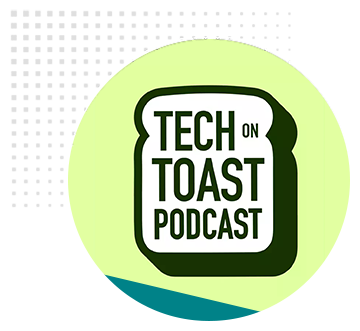
The Tech on Toast podcasts are brought to you by Chris Fletcher, Founder & CEO of Tech on Toast. Chris talks to entrepreneurs in the world of hospitality and retail technology searching for the best problem-solving tech in the industry.
In this episode, Chris talks with Pete about customer obsession with hospitality tech. From personalisation to operational efficiency, the podcast explores how our solutions help businesses create exceptional guest experiences. Plus, why legacy tech isn’t a drawback – it’s a badge of honour!